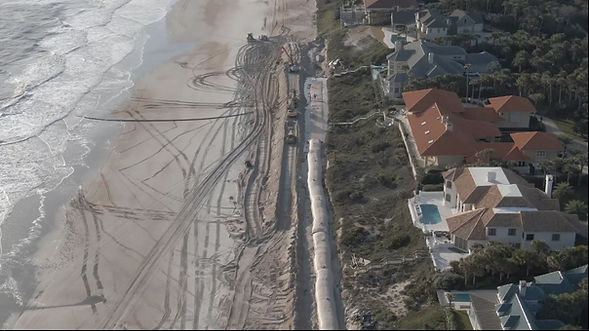
Fighting To Protect
Sea Turtles
We share nearly 1,000 miles of coastline with six species of sea turtles in the United States. Despite our affection for these amazing reptiles that can grow as long as eight feet and live for 70 years, human interference with their nesting habitat is an increasing problem. Rules to ensure that turtles can safely lay their eggs are not sufficiently enforced. Education is also lacking. All sea turtles in our oceans today are either threatened or endangered. We have to work harder together to ensure their survival.
That’s why N.E.S.T. was formed. We aim to raise awareness about the need to protect nesting habitat from obstructions and other deterrents. Some examples are: construction debris; trucked in sand of poor quality or river dirt; and coastal armoring which includes walls and geotubes. Sea turtles are also deterred from nesting by artificial lighting. Any of these factors can cause a female turtle to turn around and crawl back into the ocean, known as a false crawl. Learn how you can help sea turtles here.
Even a child innocently digging a hole in the sand and not filling it before leaving the beach can cause injury or even death to a sea turtle if the hole is large enough. A balloon release to memorialize a loved one can lead to the deaths of sea turtles who confuse balloons with what they eat - jelly fish.
After a clutch of eggs has been successfully laid by a nesting female, those eggs are vulnerable for about two months until they hatch. Thanks in part to the extraordinary efforts of citizen scientist volunteers known as turtle patrols who protect and evaluate nests on every mile of shoreline in the U.S. where sea turtles lay eggs, the sea turtle populations are on the rise.
Nevertheless, few sea turtles survive the treacherous journey from hatchling to adulthood. The biggest threats to their survival include entanglement in fishing gear and consumption and illegal trade of eggs, meat, and shells. Turtles’ ingestion of foreign objects such as plastic and balloons also cause harm. All species of sea turtles are protected through Florida Statues, Chapter 370, and by the United States Endangered Species Act of 1973.

To learn more, please check out our Turtle FAQS, News, and like and follow us on Facebook!
Find out about Sea Turtle conservancy programs and projects nationwide. Tour a local Turtle Hospital. Become involved in protecting these magnificent creatures.
Exposing Geotubes


